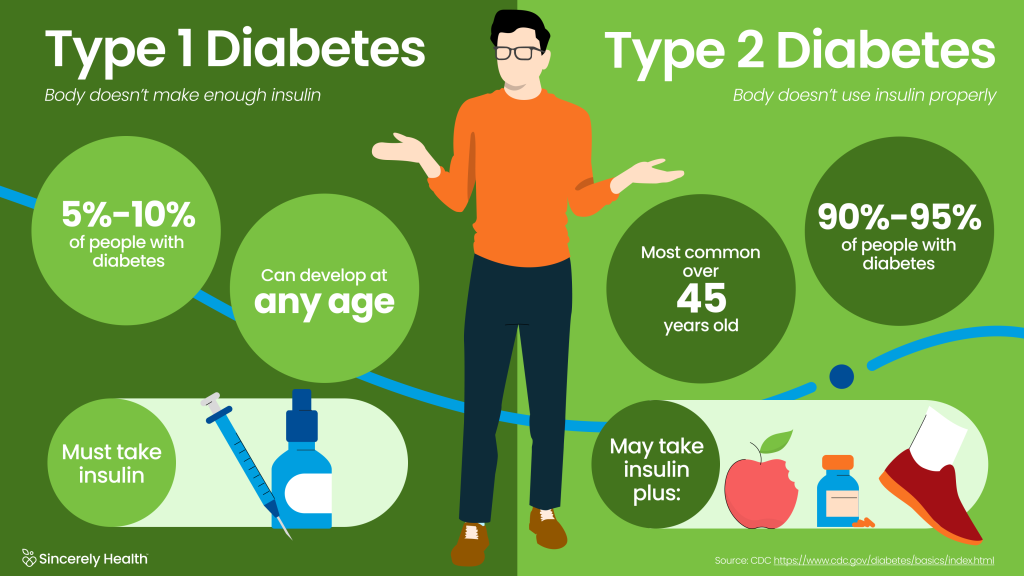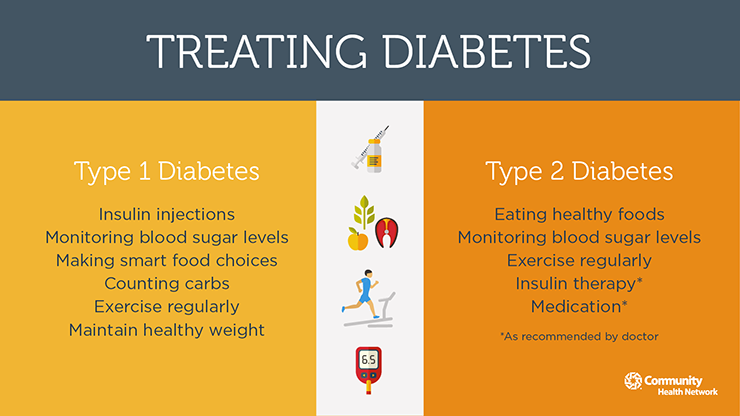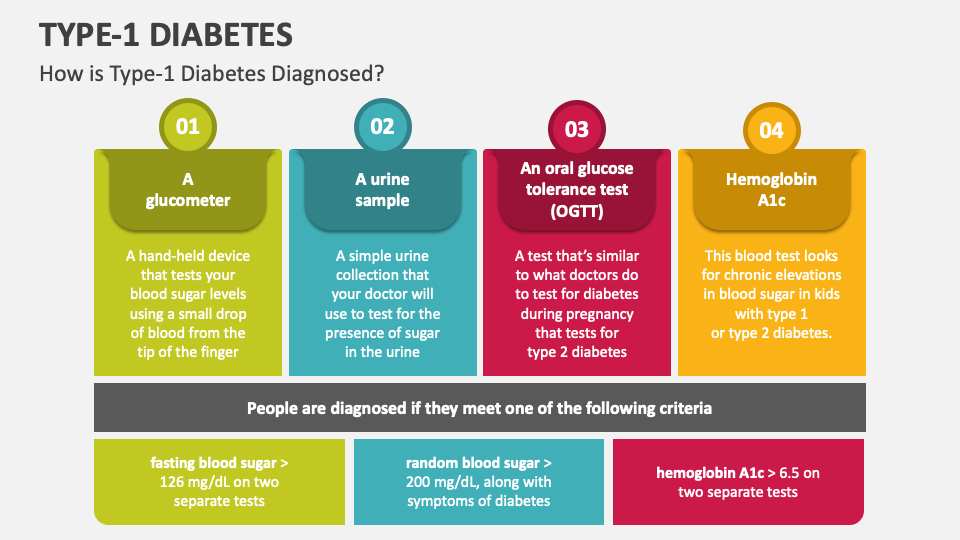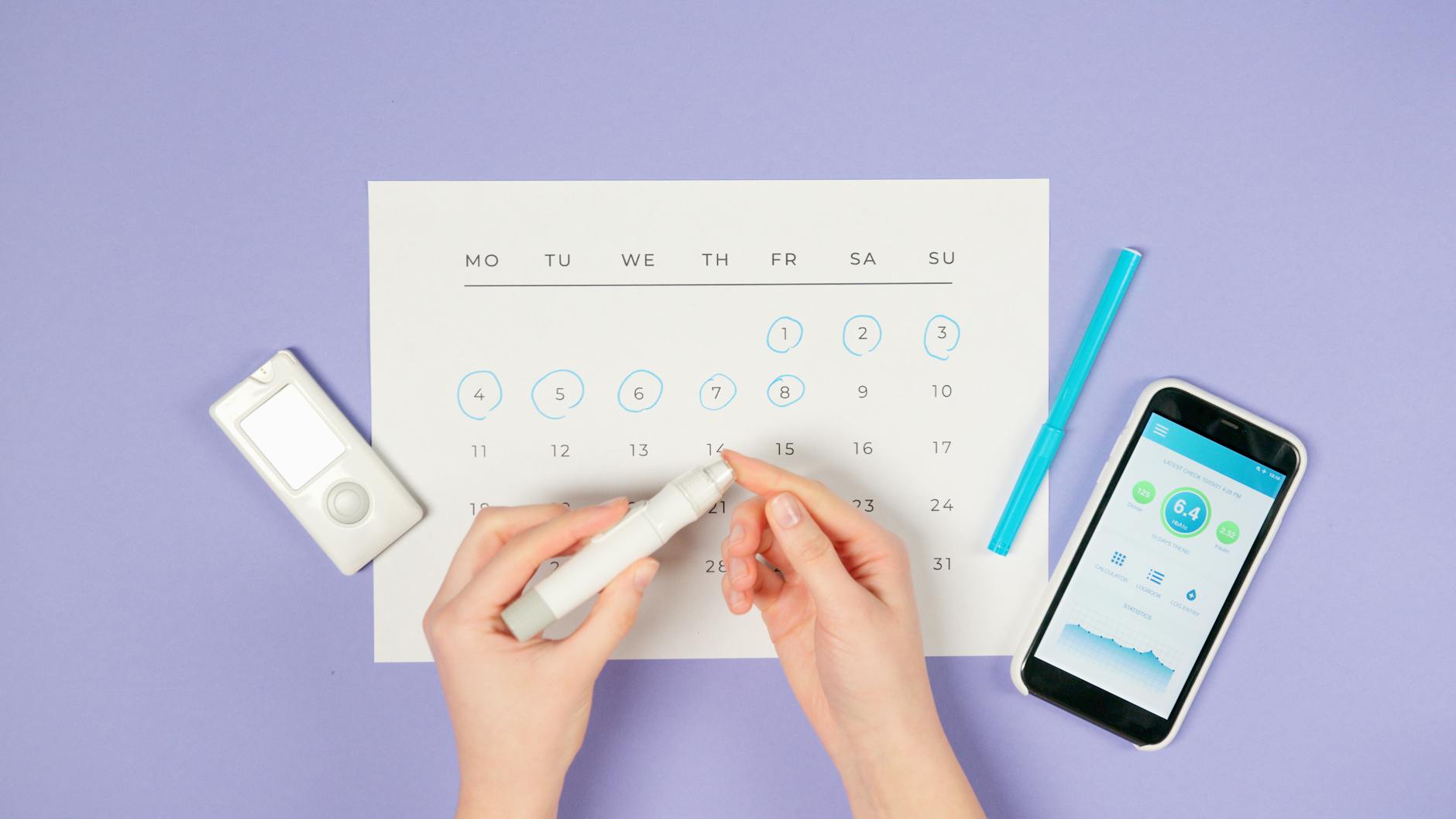Discover the 5 simple steps to effectively managing Type 1 Diabetes with ease and confidence. Take control of your health today!
Table of Contents
- Introduction: Understanding Type 1 Diabetes
- Checking Your Blood Sugar
- Eating a Balanced Diet
- Staying Active and Fit
- Understanding Medication and Insulin
- Regular Doctor Visits
- Managing Blood Sugar Highs and Lows
- Talking to Friends About Diabetes
- Creating a Routine
- Conclusion: Taking Control of Your Health
- FAQs
Introduction: Understanding Type 1 Diabetes
If you or someone you know has type 1 diabetes, it’s important to understand what it is and how to manage it. Type 1 diabetes is a condition where your body doesn’t make enough insulin, a hormone that helps your body use sugar from food for energy.
What is Type 1 Diabetes?
Type 1 diabetes is like having a key that doesn’t work quite right to unlock the door for sugar to enter your body’s cells. This can make your blood sugar levels go too high, which isn’t good for your health. But don’t worry, there are ways to manage type 1 diabetes and live a healthy life!
Checking Your Blood Sugar
One of the most crucial parts of managing type 1 diabetes is keeping an eye on your blood sugar levels. But why is it so important? Well, think of your blood sugar like fuel for your body. Just like a car needs gas to run smoothly, your body needs the right amount of sugar in your blood to keep you going strong.
When your blood sugar levels are too high (also known as hyperglycemia), it can make you feel tired, thirsty, and even cause damage to your body over time. On the other hand, if your blood sugar drops too low (hypoglycemia), you might feel shaky, dizzy, and could even pass out. That’s why checking your blood sugar regularly and keeping it in the right range is key to staying healthy and feeling your best.
Eating a Balanced Diet
When you have type 1 diabetes, it’s essential to eat a balanced diet to keep your body healthy. Some foods can even help you manage your diabetes better. Foods rich in omega 3 fatty acids, such as salmon, flaxseeds, and walnuts, can be beneficial. Omega 3 helps reduce inflammation in the body, which is crucial when dealing with diabetes. Additionally, foods high in magnesium, like spinach, almonds, and black beans, can also play a vital role in managing blood sugar levels. Magnesium benefits your body by helping regulate blood sugar and insulin sensitivity. By including these foods in your diet, you can support your overall health and well-being.

Image courtesy of www.sketchbubble.com via Google Images
Staying Active and Fit
Exercise is super important when you have type 1 diabetes. It not only helps you stay fit but also lowers the risk of high cholesterol, which can be harmful to your health. So, let’s dive into how staying active can benefit you!
Fun Exercises
There are plenty of fun ways to stay active and fit, even if you have type 1 diabetes. You can try activities like dancing, swimming, biking, playing soccer, or even jumping on a trampoline. These exercises can help keep your heart healthy, your body strong, and your cholesterol levels in check. Plus, you’ll have a blast while doing them!
Understanding Medication and Insulin
In order to manage type 1 diabetes effectively, it’s important to understand how medication and insulin play a crucial role in your daily routine.

Image courtesy of health-wellness.albertsons.com via Google Images
What is Insulin?
Insulin is a hormone that your body needs to use the sugar (glucose) from carbohydrates in the food you eat for energy. When you have type 1 diabetes, your body doesn’t make insulin, so you need to take it through injections or an insulin pump.
Insulin helps to lower your blood sugar levels by moving glucose from your bloodstream into your cells, where it can be used for energy. It’s like a key that unlocks the door for glucose to enter your cells.
People with type 1 diabetes need to check their blood sugar levels regularly and adjust their insulin doses to keep them in a healthy range. Too much or too little insulin can cause blood sugar levels to become too high or too low.
Remember, insulin is not a cure for diabetes, but it is a vital part of managing the condition and staying healthy.
Regular Doctor Visits
Visiting your doctor regularly is super important when you have type 1 diabetes. Your doctor can help you stay healthy by checking for any issues that might come up due to your condition. Let’s find out why doctor visits are crucial for managing type 1 diabetes.
Why Doctor Visits are Important
Doctors play a key role in helping you manage type 1 diabetes. They can check your blood pressure to make sure it’s in a healthy range. High blood pressure can lead to heart problems, so keeping it under control is essential. Doctors also monitor your blood sugar levels and can help you make adjustments to your treatment plan if needed.
Another important thing doctors keep an eye on is low blood pressure. This can happen when your blood sugar drops too low, and it can cause dizziness or even fainting. Regular visits to your doctor ensure they can catch any signs of low blood pressure early and guide you on how to prevent it from happening.
By working with your doctor and following their advice, you can stay on top of your type 1 diabetes and lead a healthy life. Remember, your doctor is there to help you, so don’t hesitate to reach out if you have any questions or concerns.
Managing Blood Sugar Highs and Lows
When you have type 1 diabetes, it’s essential to know what to do when your blood sugar levels go too high or too low. Let’s break down what happens and how you can manage these extreme situations in simple steps.

Image courtesy of www.ecommunity.com via Google Images
What to Do During a Blood Sugar Extreme
Firstly, if you feel that your blood sugar is too high or too low, it’s important to stay calm. If your blood sugar is high, drink water to help flush out the excess sugar. Avoid sugary drinks or snacks as they can make your blood sugar spike even higher. Make sure to take your insulin as prescribed by your doctor.
If your blood sugar is low, have a snack that contains fast-acting carbohydrates like fruit juice, glucose tablets, or candy. Wait for about 15 minutes and recheck your blood sugar. If it’s not coming up, repeat the snack and check your levels again.
Always carry a blood sugar monitor with you to check your levels when needed. It’s your best tool in managing your diabetes effectively. Don’t forget to inform a responsible adult or friend about your condition, especially when experiencing a blood sugar extreme.
Talking to Friends About Diabetes
Explaining your diabetes to your friends can sometimes feel a bit tricky. But don’t worry, it’s important to let them know, so they can understand and support you better.
| Step | Description |
|---|---|
| 1 | Monitor your blood sugar levels regularly |
| 2 | Follow a healthy diet plan |
| 3 | Stay active and exercise regularly |
| 4 | Take your medications as prescribed |
| 5 | Work closely with your healthcare team |
Sharing About Your Diabetes
When you’re ready to talk to your friends about diabetes, try to keep it simple and cool. You can start by telling them that your body works a little different than theirs because you have type 1 diabetes. Explain that it means you need to keep an eye on your blood sugar levels by checking them regularly.
Let your friends know that sometimes you might need to take a break during activities to check your blood sugar or have a snack if it’s too low. It’s important for them to understand that you’re taking care of yourself, just like how they look out for their own health.
You can also share with them the foods you enjoy eating that help you manage your diabetes, like foods rich in omega 3 and magnesium. Tell them that staying active with fun exercises is not only good for your overall health but also helps with managing diabetes.
Lastly, reassure your friends that having diabetes doesn’t stop you from doing the things you love. You can still play sports, hang out, and have fun together. Just remember to communicate with them about how they can support you if you ever need it.
Creating a Routine
Living with type 1 diabetes can sometimes feel overwhelming, but having a routine in place can make managing your condition much easier. A routine is like a plan that you follow every day to help you stay on top of things. Let’s explore why having a routine is essential when it comes to managing diabetes.

Image courtesy of www.collidu.com via Google Images
Why Routines Help
Imagine waking up in the morning and knowing exactly what to do next. Having a routine can help you remember to check your blood sugar levels, take your medication, eat healthy meals, and even fit in some exercise. By following a daily plan, you can create good habits that make managing type 1 diabetes a natural part of your day.
When you have a routine, you’re less likely to forget important tasks that help keep your blood sugar levels balanced. Consistency is key when it comes to managing diabetes, and a routine helps you stay consistent with your healthy habits.
Consider creating a diabetes management schedule that includes specific times for checking your blood sugar, taking insulin, eating meals, and being active. You can use tools like a planner or phone reminders to help you stick to your routine. Over time, following a routine will become second nature, making it easier for you to focus on having fun and enjoying life!
Conclusion: Taking Control of Your Health
Managing type 1 diabetes is all about taking charge of your health and well-being. By following a few simple steps, you can stay healthy and happy. Remember, you are in control!
Keeping Track of Blood Sugar Levels
Checking your blood sugar regularly is essential to ensure that your levels stay within a healthy range. High blood sugar can be harmful to your body, but with regular monitoring, you can stay on top of your diabetes.
Eating Right for Your Body
A balanced diet is key to managing type 1 diabetes. Foods rich in omega-3 fatty acids and magnesium can help keep your blood sugar levels stable and promote overall health.
Staying Active and Fit
Exercise is not only important for staying in shape but also for managing high cholesterol levels that can sometimes accompany type 1 diabetes. Fun activities like playing sports or dancing can keep you healthy and strong.
Understanding Medication and Insulin
Insulin is a crucial part of managing type 1 diabetes. It helps your body regulate blood sugar levels and ensures that your cells get the energy they need. Taking your medication as prescribed is vital for your health.
Regular Doctor Visits
Visiting your doctor regularly is essential for monitoring your overall health and catching any potential issues early. Your doctor can help keep an eye on your blood pressure levels and ensure that you are on the right track.
By following these simple steps and being proactive about your health, you can take control of your type 1 diabetes and lead a happy, healthy life. Remember, you’ve got this!
FAQs
Can I eat sweets if I have type 1 diabetes?
Yes, you can enjoy sweets even if you have type 1 diabetes, but it’s important to do so in moderation. Eating too many sugary treats can make your blood sugar levels go too high, which isn’t good for your health. It’s best to talk to your doctor or a diabetes educator about how to fit sweets into your meal plan without causing problems.
Will I still be able to play my favorite sports?
Absolutely! Playing sports and staying active is really good for your health, especially if you have type 1 diabetes. Exercise can help keep your blood sugar levels steady and improve your overall well-being. Just make sure to talk to your doctor about the best ways to stay safe while playing sports with diabetes.




